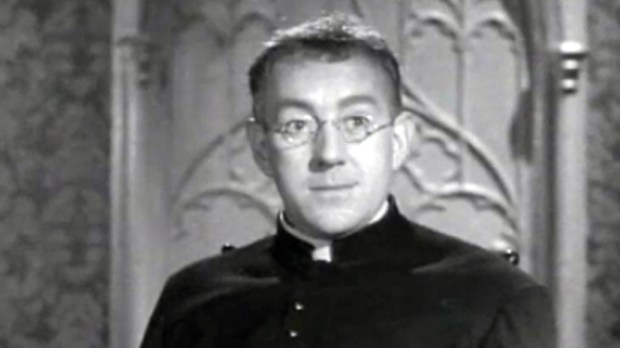Lenten Campaign 2025
This content is free of charge, as are all our articles.
Support us with a donation that is tax-deductible and enable us to continue to reach millions of readers.
Sir Alec Guinness may be one of the most versatile actors of all time. The British thespian took on roles as diverse as Shakespeare’s Romeo, a Soviet military officer in Doctor Zhivago and Obi-Wan Kenobi in Star Wars. In one celebrated 1949 film, Kind Hearts and Coronets, he portrayed nine completely different characters.
But Guinness was not acting when he embraced the Christian faith. In fact, he resisted it for many years, thinking of it as the same kind of “fairy tale rubbish” he considered Star Wars to be.
But, thanks in part to an acting role he took on, Guinness was led to what he perceived to be a much deeper reality, culminating in his choosing to become a Catholic.
As Rita Reichardt tells the story in This Rock, the magazine of the Catholic Answers apologetics organization, young Alec was an atheist at heart in spite of having been baptized in the Anglican Church at age 16. He had fleeting interests in Presbyterianism, communism, Quakerism, Buddhism, and even in tarot cards, but there was no lasting relationship with any of them.
When he began acting, an Anglican priest pointed out to him that he was blessing himself the wrong way in one of his stage roles. Another priest, during the World War II bombing of London, gave Guinness a copy of St. Francis de Sales’s Introduction to the Devout Life and advised him always to genuflect before the altar. The actor began attending Anglican services regularly.
As he related in his autobiography Blessings in Disguise, another role softened him up to the Roman Catholic faith. Guinness went to France to film a film adaptation of G.K. Chesterton’s Father Brown detective stories. Reichardt sums up the plot that gave Guinness new direction in his life:
Father Brown is the drab and delightful Catholic priest invented by G. K. Chesterton. One of Guinness’s most memorable characterizations was of this humble, crime-solving cleric. The film was being shot in a remote French village. One evening Guinness, still in costume, was on his way back to his lodgings. A little boy, mistaking him for the real thing, grabbed his hand and trustingly accompanied the “priest.” That incident affected Guinness. “Continuing my walk,” he said, “I reflected that a Church that could inspire such confidence in a child, making priests, even when unknown, so easily approachable, could not be as scheming or as creepy as so often made out. I began to shake off my long-taught, long-absorbed prejudices.” Shortly thereafter, Guinness’s son Matthew, age eleven, was stricken with polio and paralyzed from the waist down. The future for the boy was doubtful, and at the end of each day’s work on the film, Guinness began dropping in at a little Catholic church on his route home. He decided to strike a bargain with God: If God would let Matthew recover, Guinness would not stand in the way if the boy wished to become Catholic.
The boy recovered completely, and Guinness enrolled him in a Jesuit academy. At age 15, almost the same age at which Guinness himself had been baptized, his son announced that he wanted to become Catholic. To which his famous father assented.
Guinness himself began to study Catholicism and had long talks with a Catholic priest, went on retreat at a Trappist abbey and even attended Mass with Grace Kelly while he was working on a film in Los Angeles. Overcoming a few stumbling blocks vis a vis the teachings on indulgences and papal infallibility, he at last entered the Roman Catholic Church in 1956.
“There had been no emotional upheaval, no great insight, certainly no proper grasp of theological issues,” Guinness wrote, “just a sense of history and the fittingness of things.”
While Guinness was in Sri Lanka in 1956 making The Bridge on the River Kwai, his wife, actress Merula Silvia Salaman, also became Catholic. Sir Alec was knighted by Queen Elizabeth II in 1959 and went on to make many more memorable films. He and his wife both died in 2000.

